Oh, excuse me, Marvel’s Midnight Suns. Not that the game will ever let you forget it.
I’m torn over Midnight Suns. My opinion of Firaxis as a developer has sunk deeper and deeper into the Mariana Trench over the last six years, and there was absolutely nothing about the pre-release footage that excited me. Everyone’s doing card games now since Slay the Spire blew the doors off of the genre, and the Midnight Suns take on it looked like a tremendous dumbing-down of XCOM with some of the most generic art direction on the planet. Not only that, but while the MCU has reshaped entertainment in its image (by which I mean almost every single film, television series and video game made today will involve insufferably quippy and quirky characters having cartoon battles over extremely shallow and poorly-defined stakes), Midnight Suns already had the stink of failure on it thanks to Square Enix’s The Avengers and Guardians of the Galaxy1 bombing; I’m as surprised as anyone, but people just don’t seem to care about specifically Marvel-licensed videogames anywhere near as much as they do cinema and television.
So my expectations for it were rock-bottom, and that may have actually helped Midnight Suns; it didn’t need to do all that much to impress me, and it succeeded. But the more I played it, the more annoyed I found myself becoming — and not for the reasons you might expect, either. In spite of those low expectations I was surprised to discover there’s a very good game lurking somewhere inside of Midnight Suns; say what you like about the Civilization designers, but XCOM lead Jake Solomon at least still knows what he’s doing. The big problem with it, though, is that Midnight Suns hasn’t just got the Marvel license, it’s actually being written by people who are still fully in the tank for both the MCU (a series I checked out of a mere 11 years and 22 movies in) and Bioware RPGs, and who consequently are far more concerned with making me watch their Marvel action figures kiss than they are actually letting me play the damn thing.
Let’s get the number one misapprehension you might have about Midnight Suns out of the way first: despite looking a hell of a lot like the six year-old tactical strategy game XCOM 2, to the point where I had to double-check a few of my screenshots from 2016 to make sure that Midnight Suns hadn’t just straight up recycled some of the assets, in terms of gameplay Midnight Suns actually has very little to do with it. This is a deckbuilding card game like Slay the Spire or Monster Train, and aside from some vestigial flourishes that Midnight Suns inherits from the Alien Rulers DLC I can’t see all that much of XCOM in here. If you have any doubts about that statement, just go looking for the unsteady foundation that XCOM’s gameplay is built on: its famous RNG. There isn’t any in Midnight Suns — well, okay, there’s some in that you’re drawing cards from a deck, but once the cards are drawn they have static, predictable effects that are the same every time. This shifts the focus from XCOM’s risk management to Slay the Spire’s turn sequencing and damage calculus: given a particular hand of cards, what’s the right order to play them in to maximise the number of enemies killed that turn?
And in order to keep that shift in focus, Midnight Suns eliminates practically every other tactical consideration that you might have expected it to inherit from XCOM. Abilities and attacks can be used at any range, even on enemies on the other side of the map — because the maps are now so small that they comfortably fit within the bounds of a single screen. Movement ranges are similarly infinite, but you only get one pure Move action per turn — as in, you can move one hero, one time, to a new location of your choosing. Attacks will cause heroes to reposition themselves, either into melee range of the target for melee attacks or about ten foot away from it for ranged attacks, but this happens automatically and you have no control over where exactly your hero ends up. Positioning is a consideration for attacks with knockback and area effects, as well as attacks using environmental objects, but because your ability to alter that positioning is so limited it’s rare that it’ll be a major one; the most you’ll do is use your one Move to get a hero into a good position for a nice juicy push attack, and then for everything else you just do the best you can with the positioning that you have. You could quite easily convert Midnight Suns to a 2D game like… well, like Slay the Spire, and it’d play essentially the same way since many of the mechanics that rely on the 3D space have been dropped and it’s mostly just an unusually fancy wrapper for the card game.
How does that card game play, though? You can take three heroes into every fight; each hero has a deck of eight cards that you select beforehand, and all heroes’ cards are shuffled together to form your draw deck for that fight. At the start of your turn you draw up to six cards, and you also start the turn with three Card Plays, which are exactly what they sound like: playing a card will consume a Card Play, and when you hit zero Card Plays you can’t play any more cards until the next turn. The reason they’re a resource rather than a hard limit of three card plays per turn, though, is because there are cards in the game that can refund Card Plays if used in the right context. Midnight Suns uses a keyword-based system for its card mechanics (think Hearthstone or Magic), and cards with the “Quick” keyword will consume a Card Play when you play them, but if that card ability kills an opponent then you get the Card Play back. The catch is that Quick abilities tend to also be fairly low damage, so you’ll need to weaken enemies first and then use Quick attacks to finish them off. There are other cards that apply a debuff called Marked to targeted enemies, and if those enemies are killed by any subsequent card attack then you’ll also get the Card Play back; using these refund keywords to extend your turn is a big part of Midnight Suns, as it’s the best way for you to build up enough Heroism to deploy your really big guns.
If you’ve played a deckbuilding card game before then Heroism will look very familiar, since it’s your standard build/spend resource albeit somewhat simplified compared to the competition. You’ll notice that your heaviest-hitting cards all have a big orange number in the top left hand corner of the card; this is the Heroism cost required to play them, and the card will be greyed out and non-interactive if you don’t have enough Heroism banked to do it. The cards that don’t have a Heroism cost in the top left corner instead have a smaller orange number in the bottom left; this is the amount of Heroism you’ll gain by playing that card. Heroism persists between turns so it’s possible to spend one turn playing skills and basic attacks to build up your Heroism and then blow it all on Heroic abilities on the following turn, but it’s also perfectly possible to build and spend all in the same turn, especially if you’re properly leveraging abilities with Quick/Marked and card draw. And if you have a lot of Heroism but no Heroic cards in your hand, then you can burn some of it off by executing an environmental attack; there’s a bunch of environmental objects scattered across every map, and you can spend Heroism to kick crates into clusters of enemies or drop street lamps on their heads. Environmental attacks only do average damage, but the great advantage of them is that they don’t cost a Card Play to do and so are essentially “free” damage.
Midnight Suns does retain some tactical strategy trappings that are more than superficial, but it’s pretty telling that they look more like Into the Breach2 than they do XCOM. Once you hit the “End Turn” button it’s the enemy’s turn, and they don’t bother with cards; instead, each enemy will attack your heroes once. You’re not told precisely how much damage the attacks will do, but you are told which hero each enemy is targeting and whether the incoming attack will be normal or heavy — this lets you prioritise targets on your turn to try and kill the heaviest hitters, or else use Taunt abilities to redirect incoming attacks away from wounded heroes. Some enemies do have additional abilities that they’ll execute after an attack, like deploying a big shield to protect the mission objective, but that’s a problem that you can deal with on your next turn; in general Midnight Suns is pretty good at flagging up the things you’ll need to care about on the enemy turn and letting you plan around them. Midnight Suns has the standard Firaxis-grade UI (that is to say, it’s absolutely terrible) but it does at least adequately display how much of the enemy health bar your own attacks are going to knock off, and whether a given attack will kill them or not. When you use a Knockback ability the game will show you exactly where the enemies are going to end up, and in fact one of the big things that kept me playing was fine-tuning Knockback trajectories to cause as much damage as possible by throwing enemies into exploding barrels, electrical generators or other enemies. Again, this is a game about planning, not risk management, and Midnight Suns is at least smart enough to have restructured its combat layer around this core conceptual change.
The last thing to say about the combat in Midnight Suns — and probably the game’s most unexpected success given how disastrous the rest of the theming is — is that it does a very good job of making each hero’s card abilities tie into their thing. Captain Marvel is a walking tank who shrugs off everything thrown at her while obliterating enemies with her Photon Beam attack. Spiderman gets cards that grant additional moves and free environmental attacks, so he’s constantly flipping around the map pulling down cranes onto groups of enemies and jump-kicking off of platforms. Magik is a mutant who can summon portals, and every single one of her attacks is about spawning one end of a portal next to an environmental hazard and then punting an unfortunate enemy through the other end like she’s playing interdimensional golf. There are some heroes who are weaker than others (Ghost Rider’s defining thing is that he is fucking useless), but they all feel very distinct and well-themed in how they play, which is very impressive considering there’s 12 of them you can recruit to your team. That also goes for their look and feel; Midnight Suns is not exactly a good-looking game (in fact it might actually be uglier than the six year-old XCOM 2), but every hero has unique animations for every card ability and environmental attack that lend a lot to their character when they’re in the middle of a scrap.
Really, I was very pleasantly surprised at how good Midnight Suns’ combat was. It doesn’t have the depth of Slay the Spire, but it doesn’t need it; this is a combat system designed to provide the player with short and snappy combat problems that, for the most part, last no longer than 10 minutes, and it mostly succeeds in this. The different hero abilities, combinations and the distinctiveness of each hero also helps a great deal in staving off the battlescape fatigue that inevitably crept into both iterations of the new XCOM, and I think the combat system is potentially a very strong foundation for a game, just so long as it’s embedded within a strategy layer (or metagame) that’s had the same amount of thought put into it.
Unfortunately for Midnight Suns it seems that the people who designed the metagame were not able to remain grounded the in the same way that the people who designed the combat layer were3, and instead spent the vast, vast majority of their time geeking out over the fact that they got to play with their favourite Marvel characters. When I started the download for Midnight Suns I was shocked to see that it was 56 gigabytes; that is a chunky install size given that it’s not exactly graphically cutting edge, and I immediately had flashbacks to Age of Empires 4 being almost 100 gigabytes not because it was a particularly huge or expansive game, but because it included multiple hours of HD drone footage of real-life castles. These fears were unfortunately well-founded, because in the first two and a half hours of Midnight Suns the amount of actual gameplay I experienced consisted of the tutorial and two story missions, which took me maybe forty minutes. The rest of the time was spent in cutscenes — not necessarily cutscenes to explain the story, mind you, but cutscenes to introduce the vast, vast number of ways that Midnight Suns has to socialise with your superheroes and dress them up in some truly hideous outfits.
The most offensive thing about this is that the actual plot of Midnight Suns is some of the most disposable videogame trash garbage that I’ve seen in a while. Hydra defrost a big baddie called Lilith who looks like a palette swap of one of the Chosen from XCOM expansion War of the Chosen, and then we’re immediately shunted to Tony Stark and Doctor Strange trying to get a piece of paper off of Ghost Rider I, and then they teleport to Doctor Strange’s mansion where Lilith attacks for reasons that I don’t think are ever really explained, and then Doctor Strange mumbles something about a prophecy and teleports again to a place called the Abbey where they bring the player character — a personality black hole called The Hunter — out of suspended animation to fight Lilith. At no point is it explained why Lilith is so bad or why the Avengers are so scared of her or why, exactly, they need this Original Character Do Not Steal in order to defeat her. Perhaps this was all laid out in a comic at some point, but I doubt it. If Midnight Suns had spent a bit more of its voluminous cutscene time establishing stakes and character motivations I might have… not exactly liked it, but I would have at least accepted them as a valid part of the game.
Instead the vast bulk of these cutscenes are spent on all of the various activities you can engage with around the Abbey, which is your base of operations. There’s the Forge, where Doctor Strange and Tony Stark use a fusion of magic and technology and an imprisoned Babylonian demon to… unlock your card packs. There’s the Training Yard, which Blade does his best to big up but which is literally just a menu where you can spend money to give individual heroes temporary buffs as well as fuse your cards together for upgrades. There’s the CENTRAL computer, where you can give Captain Marvel intel boxes so that you can send heroes on daily missions where they bring back a card. Because all of these things can only be used once per day we’re already getting to that point in every Bioware RPG where you have to run down an itinerary every time you go back to base in case you accidentally miss one – but wait, there’s more! You’re additionally introduced to, in quick succession:
- Superlink, which is billed as “social media for heroes” and essentially functions as the game’s email system. If you want to see Nico from Runaways complain because Tony Stark broke the coffee machine, this is where to go.
- Hangouts. Every 3-4 missions you’ll get the opportunity to have a Hangout with one hero. This is a disposable conversation about precisely sod-all of relevance, and which functions solely to boost your Friendship meter with that hero.
- Havens, special points around the Abbey where you can bring a hero to, uh, paint with them? Or go fishing? I don’t even understand what the hell we’re doing here, but this gives you a big Friendship boost.
- Compliments. I forget how you get these actually, and the game never explains why there’s such a limited supply of them — although I can see The Hunter being so awkward that he has to write them down in advance — but you can Push F To Compliment for another Friendship boost.
- Clubs. The world is facing an apocalyptic (if extremely poorly-defined) threat, and Blade wants to start a book club. There are a few of these, and completing a club event gives you a Friendship boost with everyone who attended.
- Hero Requests. “The life of a hero is complicated”, says the blurb for these, “and sometimes they could use your advice.” Which amounts to them giving you missions where you have to buy them a new hat in exchange for — you guessed it — a Friendship boost.
Midnight Suns spends a staggering amount of time and effort on these events — and the worst thing about them is that even if you do not give the tiniest iota of a shit about asking Blade for help preparing for Magik’s birthday party, you still can’t afford to ignore the Friendship meters because improving a hero’s Friendship upgrades their combo abilities and then eventually unlocks their ultimate ability when it’s maxed out. This means that every time you come back after a mission you need to do your Friendship chores, and then in the morning unlock your card packs and do your training and intel missions. It is totally obnoxious, and totally exhausting.
This is the crux of my problem with Midnight Suns, then: Firaxis’ designers have come up with a good, if not great, combat system with a pretty tight 10-15 minute loop — and then bogged it down in a metagame where you have to do at least an equivalent amount of tedious bullshit back at the Abbey before you can start the next one. And that’s if you don’t get sideswiped by a story cutscene, which are some of the longest I’ve experienced outside of Final Fantasy 14 and where your choices are limited to either gritting your teeth and sitting through it (there’s no dialogue skipping), or just skipping the entire thing and being totally clueless as to what is going on. The quality of the writing is truly dire; every single hero acts like a hormonal teen that takes turns holding the idiot ball, everyone keeps pointless secrets from one another so that there can be shocking revelations at the end of the story (spoiler: said revelations are not shocking, or particularly revelations seeing as how I’d figured them out thirty hours earlier), and in fact I think Midnight Suns would have worked far better as a Buffy the Vampire Slayer game since the tone (if not the quality) of the writing is very similar and it would at least explain why everyone spends the entire game living in a magical dormitory.
And the game spends hours on this. In fact I can extrapolate from the number of missions I did during the campaign; if we generously say that each mission took an average of 20 minutes (some story missions are longer, and I did dabble in a few of the combat puzzles to be found around the Abbey) then 63 missions times twenty minutes is just under 21 hours. Steam says my total playtime for Midnight Suns is 41 hours, meaning I spent twenty hours in cutscenes, or conversations, or pissing about in the Abbey gathering herbs for Magik. Again, Final Fantasy 14 is one of my favourite games so I have a high tolerance for fetch quest-tier gameplay leading to extremely long cutscenes just so long as the cutscenes are good, but Midnight Suns spends far more time trying to make funny jokes than it does trying to tell a good story and since I counted exactly one good joke in the entire game it was almost entirely a wasted effort.
(And this is all without getting into the entire concept of the Hunter, who is one of the most laughable attempts at a “cool” character I’ve ever seen. You can tell they’re cool because they use two swords and magic and all of the big heroes have heard of them and use words like “legendary” to refer to them and say how cool and awesome they are in nearly every interaction. It is good that the game has told me they are so cool, because otherwise I might think that they were a total fucking charisma vacuum whose single defining character trait is that they are a knockoff of the Groosalug from Angel — again, more Whedon influence showing through on the writing here.)
There’s a lot more in Midnight Suns that I haven’t unpacked, both good and bad, In the good column I did like some of the Metroid-esque exploration of the Abbey grounds, shallow though it might have been, and in the bad column are the mission rewards you get for punching Hydra goons into the sun, which primarily consist of a currency called Gloss that is used solely to buy cosmetics, and further in the bad column is that due to story reasons you don’t get access to your full character roster until about three hours before the end of the game and so there are two heroes who basically never get used. Ultimately I don’t want to go to the effort, though; I think I’ve made my point, which is that Midnight Suns is a very appropriate release for 2022, the year of otherwise-good games that are sabotaged by their own developers’ insistence that their terrible videogame story is so important that it needs to be experienced by the player4 at the expense of actually being able to play the bloody thing. It’s a better game than I was expecting, but since I was expecting absolutely nothing that’s not exactly saying much.
- Hot take on this one coming soon to an end-of-year roundup near you! ↩
- Which has been one of the most quietly influential games of the last decade despite not doing that well commercially. ↩
- I’m assuming these were different groups of people. If they were the same group of people then I don’t even know what the hell happened here. ↩
- Hardspace Shipbreaker and Neon White are the other shining examples of this phenomenon. ↩

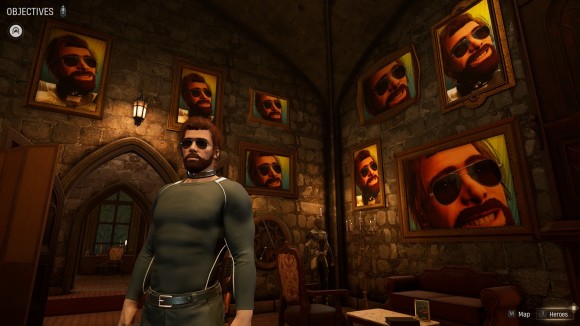
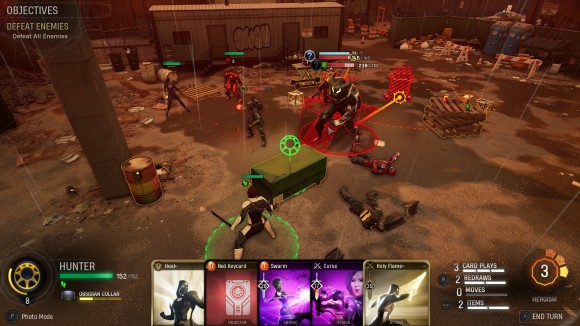
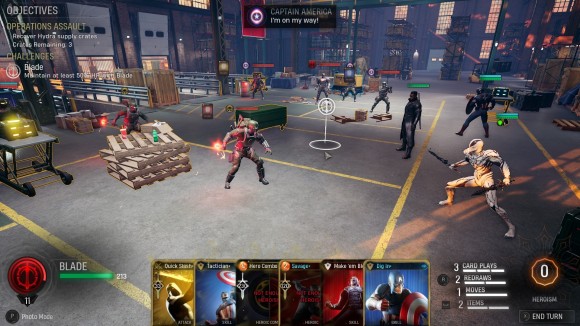
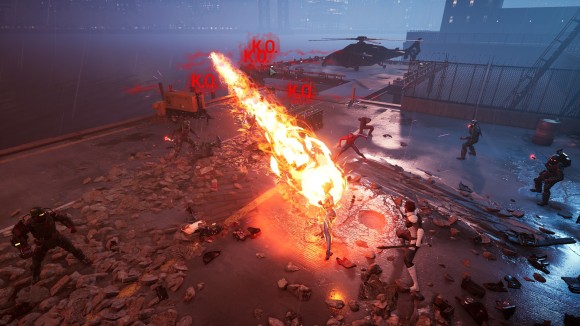
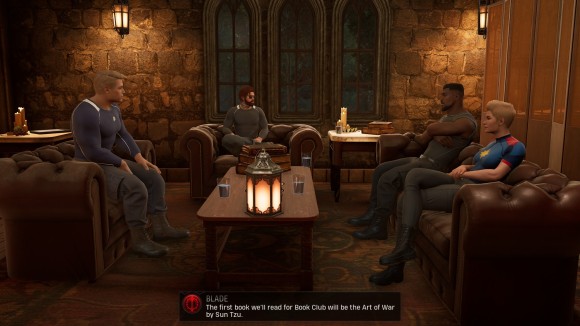
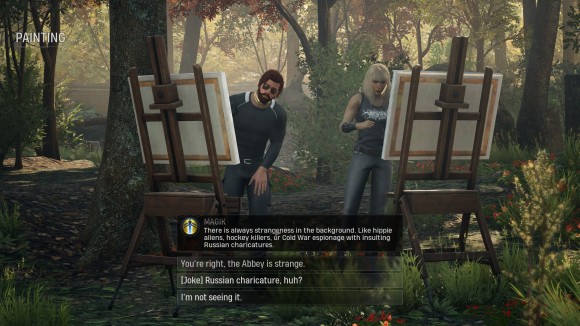
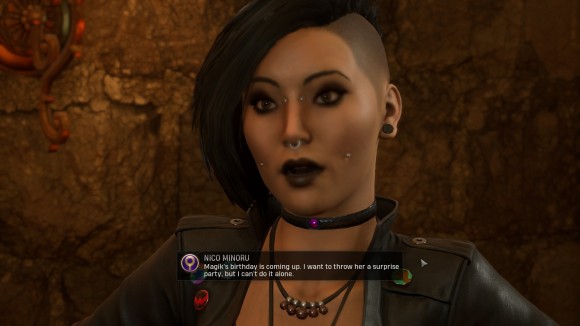
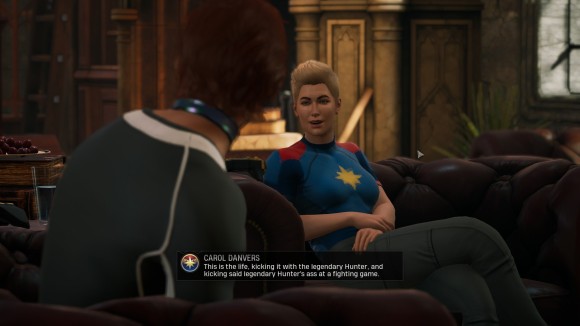
Man, I liked Guardians of the Galaxy. Better than the second movie, at least. Unleash your hot take!
“hormonal teen that takes turns holding the idiot ball”
This sentence prefectly describes a lot of bad fiction I’ve read, where characters take turns being supremely intelligent and aware, vs insanely self destructive and plain dumb(think battlefield earth for shining example ugh)